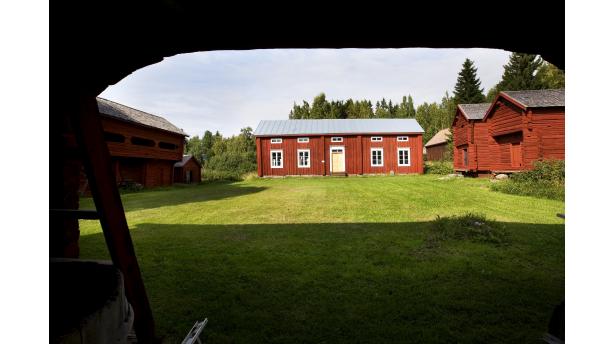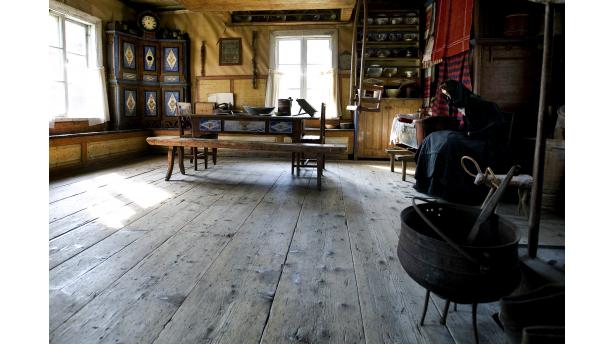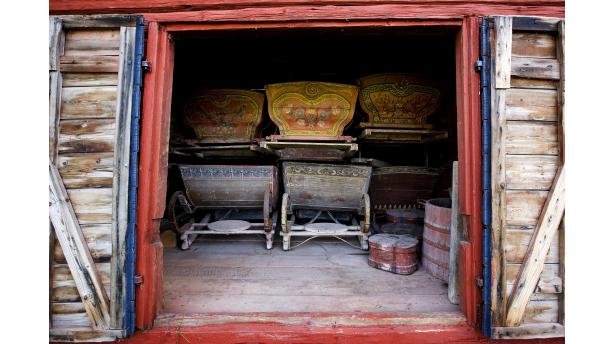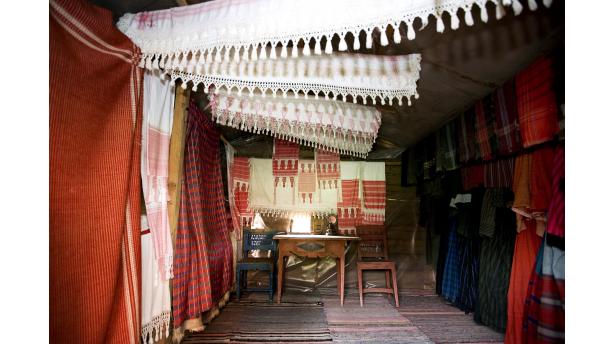There are both festive ensembles and bedlinens in the museum’s textile collection, around thirty horses’ caparisons, plenty of bedcovers, as well as crocheted, knitted, woven and embroidered textiles.
Museum A-Ö » Myrbergsgården
Myrbergsgården




Did you know...
There are both festive ensembles and bedlinens in the museum’s textile collection, around thirty horses’ caparisons, plenty of bedcovers, as well as crocheted, knitted, woven and embroidered t ...
In the Myrbergsgården museum the visitor can get acquainted with the peasant way of life in the old times as well as with one of the finest garment and textile collections in the municipality. In one of the houses across the yard can be seen a unique gathering of beautifully painted church sleighs, which the people of the house used in order to get to the church on Sundays.
The Myrbergsgården museum area in Vörå nowadays consists of around 17 buildings, which have been relocated on the region from different villages in Vörå. In addition to the agrarian house here can be found for instance a functioning smithy and a windmill. To the museum also belongs a loan grain magazine from the year 1753, which is among the three first ones in Ostrobothnia.The museum’s textile collection is one of the finest in the municipality and it comprises of approximately 6 000 various textiles. In the girls’ barn are hung beautiful bedsheets, clothes and blankets in rows. The material was mostly wool and red was the typical colour of textiles in the region, although green and white were also used. By exploring the colours and patterns of the textiles one can see, how materials and colours have changed from the late 18th century to the present day. The majority of the textiles in the museum originate from the end of the 19th century. There are both festive ensembles and bedlinens in the collection.
The clothes used in the cowshed were hung at the door-post. Clothes were used for a long time and they were patched up, if necessary. In the collection is for instance a petticoat with 17 patches on it!
A full linen cupboard with pillows is also on view in the museum.
In the cart shed of the courtyard is one of the museum’s pearls: a collection of gracefully painted church sleighs, that were used for faring to the church every Sunday. Even the harness and the collar were finely decorated. Next to the museum is a church stable, where horses were left during the church service. The church stable is the only surviving stable of the approximately hundred church stables, which used to surround the Vörå church.
In one of the grain barns is an exhibition depicting baking in the old times and in another one various wooden containers, for instance a pint pot, a steelyard balance and a wooden barrel from the year 1678. There are two different types of lofts on the area, a kiln, a smoke sauna, a soldier’s cottage and a stonemason’s house from the year 1890.
Summer exhibitions on various themes are arranged annually. During the year schoolchildren can upon request participate in time travels.



